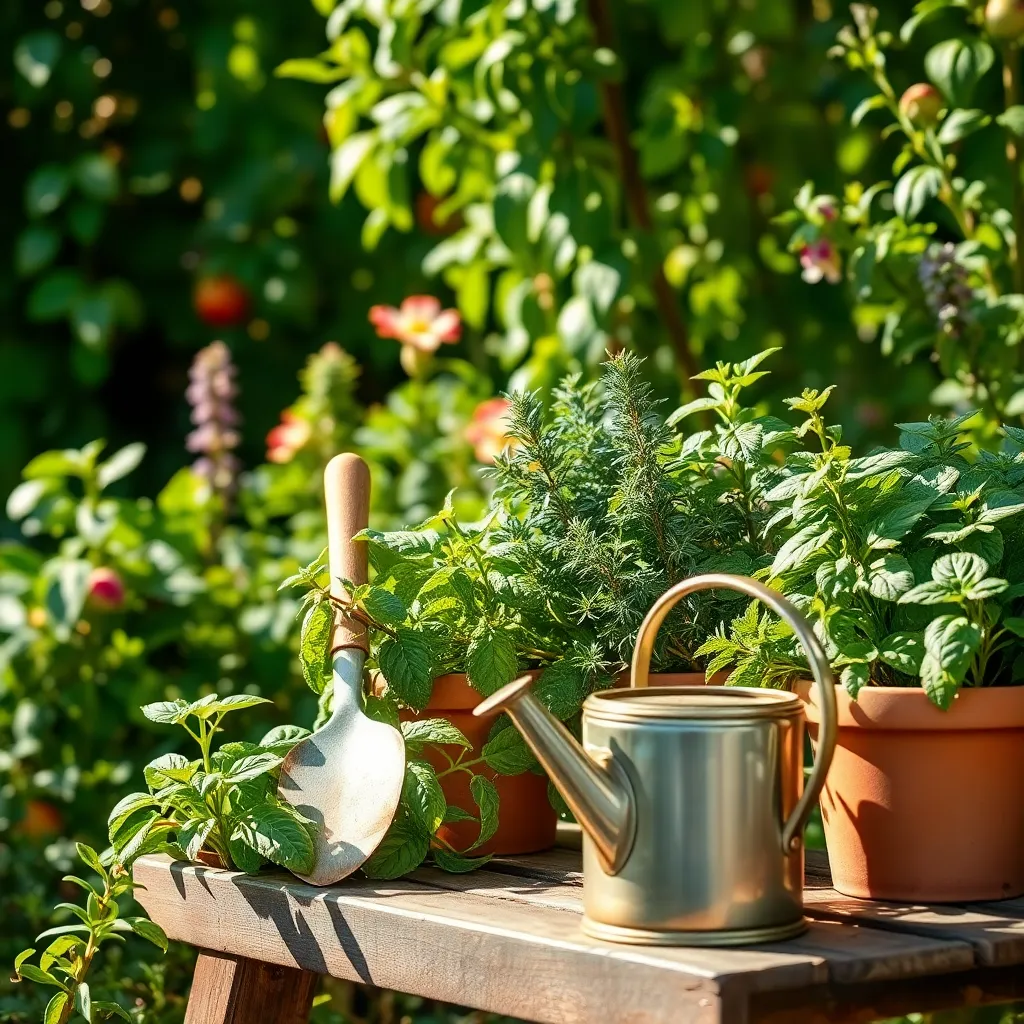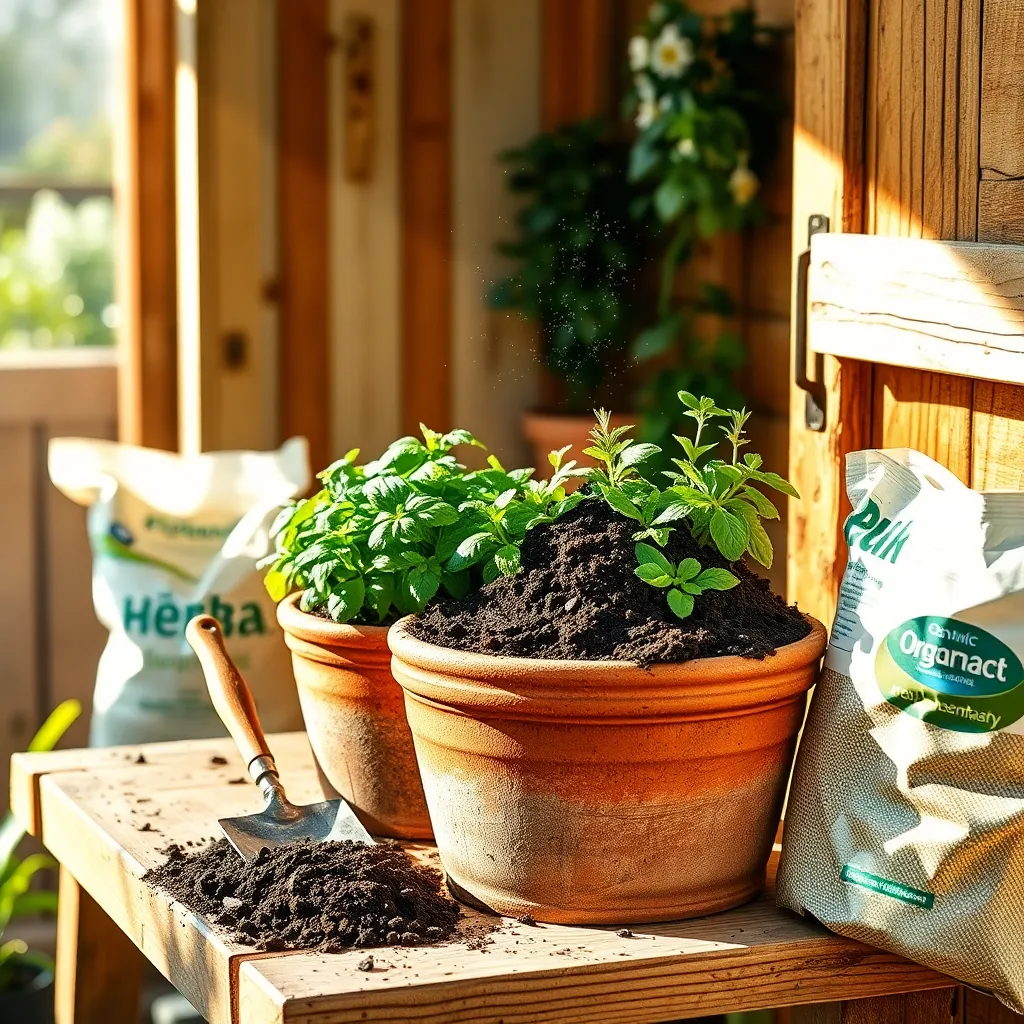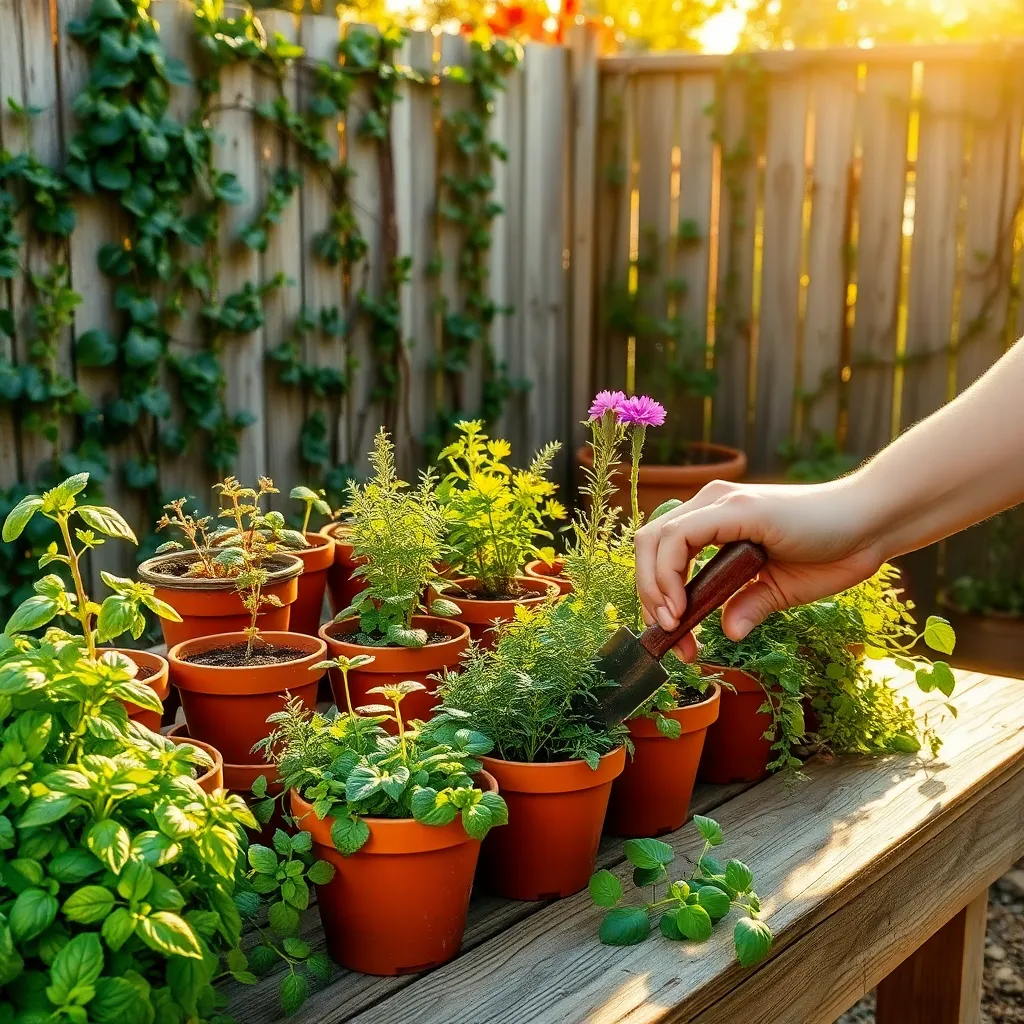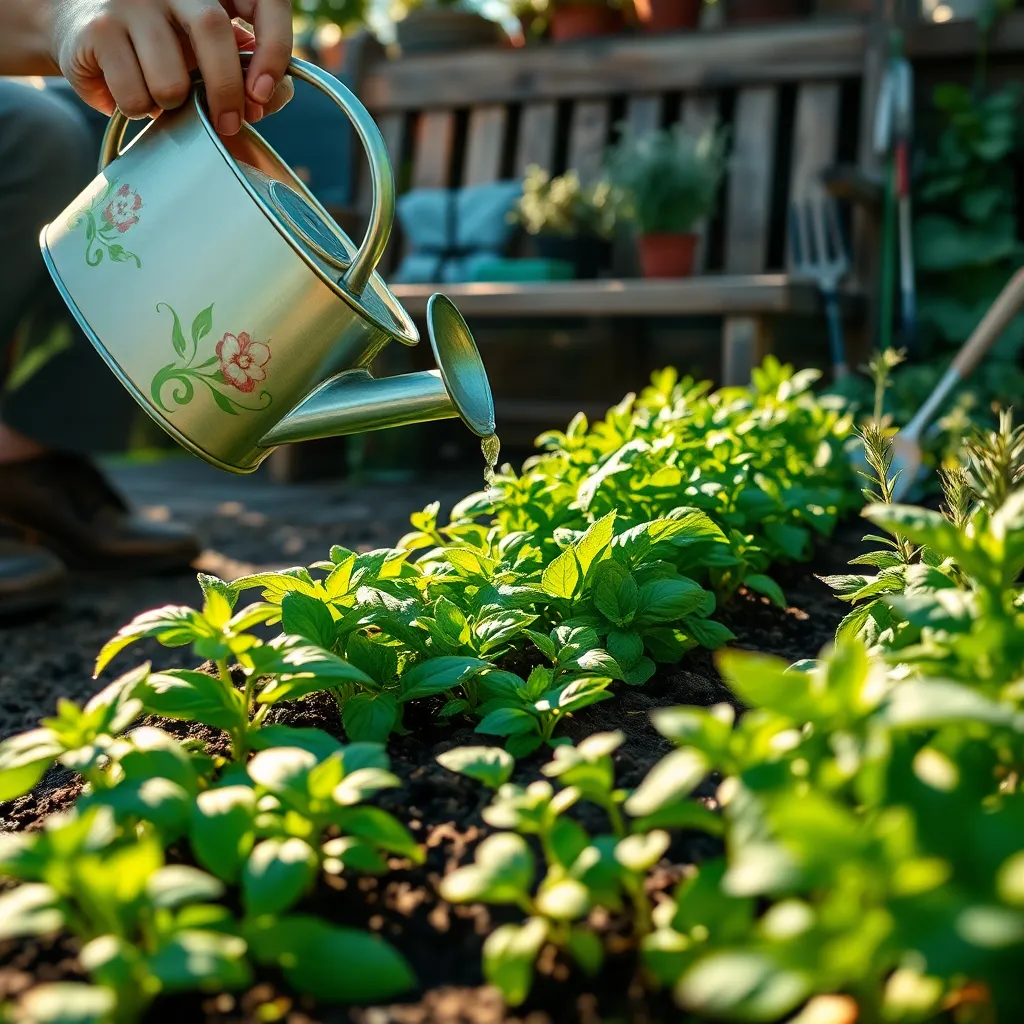Imagine stepping outside your door to snip fresh basil for tonight’s pasta or mint for a refreshing tea. An herb garden is a delightful addition to any home, offering a symphony of flavors and fragrances that can transform your cooking and invigorate your senses. Whether you’re a seasoned gardener with years of experience or a beginner just starting to dig your hands into the soil, cultivating your own herb garden is an inviting and rewarding endeavor. With a few guiding principles, you’ll be able to nurture a thriving patch of greenery that not only enhances your meals but also brings joy to your daily routine.
The beauty of an herb garden lies in its versatility and simplicity, making it accessible for every gardener. From selecting the right location and choosing the best herbs for your climate to understanding the nuances of soil and sunlight, this guide will equip you with the knowledge to create a flourishing herb haven. As you embark on this journey, you’ll discover practical tips for planting, maintaining, and harvesting your herbs, ensuring a bountiful supply throughout the seasons. By the end of this article, you’ll be empowered to cultivate a garden that is as functional as it is beautiful, bringing a touch of nature’s artistry into your home.
Select Ideal Garden Location

Choosing the right location for your herb garden is crucial to ensure healthy plant growth. Herbs generally thrive in areas that receive at least six hours of sunlight each day. Consider the orientation of your garden; a south-facing spot is ideal as it maximizes sun exposure. Be mindful of any structures or trees that may cast shadows over your chosen area, particularly during peak sun hours.
It’s important to evaluate the soil quality in your selected location. Herbs prefer well-draining soil enriched with organic matter. Conduct a simple soil drainage test by digging a small hole, filling it with water, and observing how quickly the water drains. If the water remains for more than an hour, amend the soil with sand and compost to improve drainage.
Access to water is another critical factor to consider when selecting your garden location. Position your herb garden near a water source to facilitate regular watering, especially during dry spells. Remember that while most herbs do not need excessive watering, consistent moisture is essential, particularly for new plants. Installing a drip irrigation system can be a great investment for more experienced gardeners to ensure even watering.
For those looking to add a touch of creativity, incorporate vertical gardening techniques if space is limited. Using wall-mounted planters or tiered shelves can optimize space while also enhancing visual appeal. This approach is especially beneficial for herbs like basil, thyme, and mint, which adapt well to vertical environments. Experimenting with such techniques can lead to a more dynamic and productive herb garden, suitable for both small urban balconies and larger backyard settings.
Gather Essential Gardening Tools

To start building your herb garden, gathering essential gardening tools is crucial. Having the right tools will make your gardening experience more enjoyable and efficient.
A basic toolkit for beginners includes a sturdy trowel, pruners, and a hand fork. These tools will help you with planting, cutting, and loosening soil around your herbs.
For those looking to enhance their gardening skills, consider adding a soil pH tester and a pair of bypass loppers. These tools will enable you to monitor soil health and manage larger plants or woody herbs like rosemary and lavender.
Investing in a watering can with a long spout is essential for precise watering. This will help you target the base of the plant and avoid wetting the foliage, which can prevent diseases.
Keep your tools clean and sharp to ensure efficient cuts and reduce the risk of spreading plant diseases. Regular maintenance will extend the life of your tools and improve the health of your herb garden.
Prepare Quality Potting Soil

Creating quality potting soil is crucial for the success of your herb garden. It provides the essential nutrients and drainage that herbs need to thrive.
Start by using a good base of commercial potting mix, which is designed to retain moisture while allowing for adequate drainage. You can enhance this mix by adding perlite or sand to improve aeration, especially important for herbs like rosemary and thyme that prefer well-drained soils.
Adding organic matter such as compost or well-rotted manure can significantly enrich your potting soil. These materials increase the nutrient content, helping herbs like basil and parsley to grow lush and healthy.
For those looking to take their potting soil to the next level, consider adding a handful of slow-release granular fertilizer. This will provide a steady supply of nutrients over time, reducing the need for frequent fertilization.
Plant Herbs with Care

When planting herbs, start by choosing a sunny spot, as most herbs thrive in full sun with at least six to eight hours of sunlight each day. If you’re gardening indoors, place herbs near a south-facing window or use grow lights to mimic natural sunlight.
Consider the soil type and drainage, as herbs prefer well-drained soil to prevent root rot. You can improve drainage by adding perlite or sand to your potting mix, ensuring your herbs have the optimal conditions to flourish.
Watering is crucial, but overwatering can be detrimental. Allow the top inch of soil to dry out between waterings, especially for Mediterranean herbs like rosemary and thyme, which prefer drier conditions.
To encourage bushier growth, regularly pinch back the tips of your herbs. This technique not only keeps your plants from becoming leggy but also promotes a fuller, more productive herb garden.
Advanced gardeners can experiment with companion planting, which involves growing certain herbs together to enhance their growth and flavor. For example, basil pairs well with tomatoes, not only in recipes but also in the garden, as it can improve the growth and flavor of the tomatoes.
Water and Maintain Regularly

Consistent watering is crucial for a thriving herb garden, as it ensures your plants have the moisture they need to grow. Most herbs prefer well-draining soil, so make sure to water deeply but allow the soil to dry out slightly between waterings to prevent root rot.
Consider using a drip irrigation system or a soaker hose to provide steady moisture while conserving water. Early morning is the best time to water, reducing evaporation and giving plants a chance to absorb moisture before the sun gets too hot.
Regular maintenance is key to keeping your herb garden healthy and productive. This includes removing weeds that compete for nutrients and trimming plants to encourage new growth.
For herbs like basil and mint, frequent harvesting can promote bushier plants and prevent flowering, which can alter the flavor. Pinching off the tops of herbs like basil can stimulate branching and more leaves, giving you a lush supply for cooking.
Advanced gardeners might consider testing the soil pH and nutrient levels to tailor fertilization practices. Most herbs thrive in slightly alkaline to neutral soil, so adjust your soil amendments accordingly to optimize growth.
When it comes to fertilization, a balanced, all-purpose fertilizer applied every few weeks can help maintain vigorous growth. However, be cautious not to over-fertilize, as this can lead to lush foliage with less flavor intensity.
Conclusion: Growing Success with These Plants
In building your own herb garden, we’ve explored five essential relationship concepts: patience, nurturing, communication, flexibility, and growth. Just as a garden flourishes with attentive care, so do relationships thrive when we patiently nurture them, communicate openly, adapt to changing needs, and embrace growth together. The parallels between tending to a garden and fostering healthy relationships remind us of the importance of consistent effort and loving attention.
As an actionable next step, choose one herb to plant together with your partner, using it as a symbol of your shared commitment to cultivating your relationship. This simple act serves as both a literal and metaphorical reminder of your journey together, encouraging ongoing collaboration and understanding.
We invite you to save or bookmark this article as a resourceful guide on your relationship journey. By revisiting these insights, you’ll find continuous inspiration to nurture your bonds with intention and care.
Looking ahead, remember that the seeds of today’s efforts can bloom into tomorrow’s relationship success. Empower yourself by taking these lessons to heart, and watch your relationship thrive like a well-tended garden. Embrace the journey, and let your love grow abundantly.

